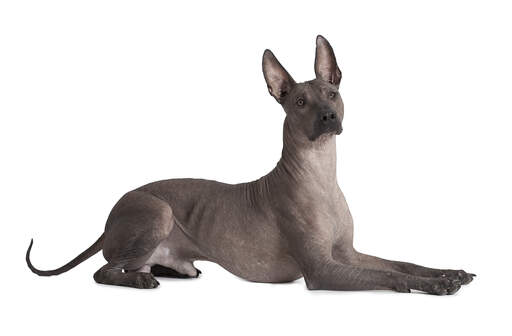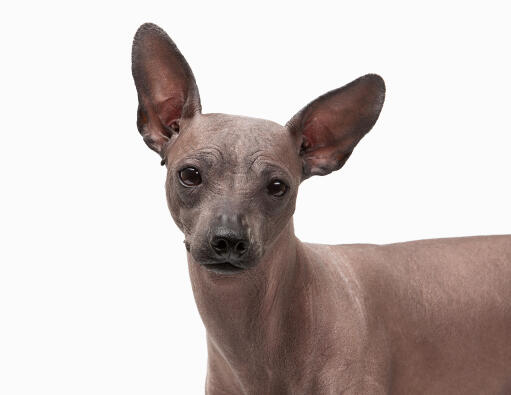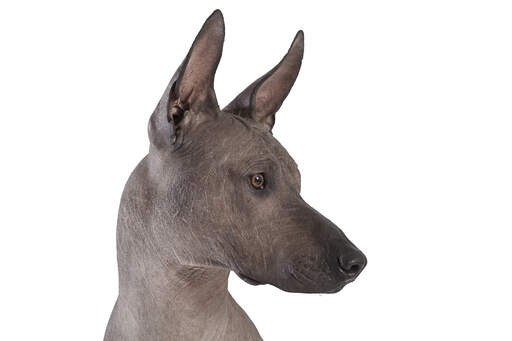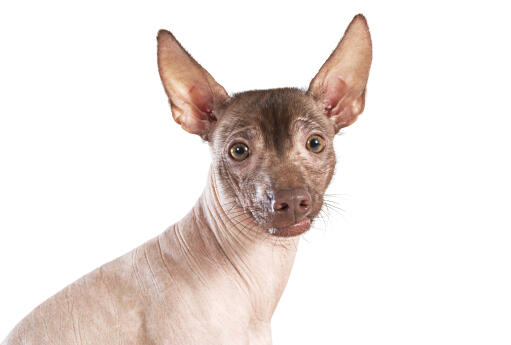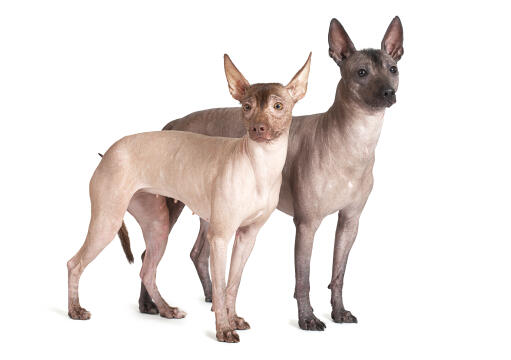Mexican Hairless Dogs





History
This breed has a long history. Records of them have been found from over 3000 years ago. The dogs were seen as companions and hunters of small prey, but most importantly were seen as a gift from the Aztec Gods to help people transfer to the afterlife. Nowadays they are more common than they were back then thanks to a concerted breeding program in the 1940’s-1950’s. Despite being called “hairless” they can be born either with or without a coat, most litters are a mixture of the two. The hairless gene is present in all litters. They come in three sizes, Miniature, Intermediate and Standard. They are also sometimes known as the Xoloitzcuintle/i, or Xolo for short. They are the national dog of Mexico.
Behaviour
Xolos are calm and affectionate dogs that will form a close bond with their family. They do tend to stick closer to their “main” owner though. They are naturally wary of strangers, both in and out of the home, and will need proper socialisation from a young age in order to prevent aggressiveness. Inviting lots of different people into the house whilst they are still puppies will help them get used to the idea of unknown people being around them. They are fine with respectful children, but will not tolerate being teased or having their tail pulled. They can be taught to live with cats, though this is no match made in heaven and some tension between the two will always be present. They can get snappy with strange igs inside and outside of the home, so also make sure that they are used to other dogs being around. Puppy classes will be a great help.
Mexican Hairless Dogs make great guard dogs, as they rarely bark so when they do feel the need to, you’ll know something is up.
Training this breed will take both time and patience, but they can learn and will do so quickly; if they are in the mood, that is. They are sensitive and don’t take all that well to harsh words. Keeping training fun, short and consistent will bear the best results.
These dogs have quite high exercise needs and will need a chance to burn off energy each day. A good run and a solid play session will be ideal. They have a tendency to chase after animals which means it’s best to walk them either on a leash or in a secure area. Even if you are confident in their recall, remember that their prey drive will be stronger than their will to return to you. Providing them with lots of toys will help keep them mentally stimulated and prevent boredom. They take about 2 years to mentally mature.
Despite having no fur, they still need some grooming. They do make sure to keep themselves very clean but will require occasional bathing with a gentle shampoo. Be sure to apply sunscreen to their skin when needed. They will need a coat/jumper in winter and sunscreen in summer.
Temperament
Mexican hairless dogs have an affectionate and companionable temperament. They will become very attached to their owners and will like being by your side. They also seem to crave physical attention. They are energetic dogs, but once this energy has been burned off they will be content and docile within the home. They can be wary of other dogs and strangers if not properly socialized.
Health Problems
There are no known hereditary problems with this breed. However, hairless types are usually missing some teeth, hairlessness being linked to the relevant dental genes.
Breed Details
- Status: Common
- Life Expectancy: 12 - 15 years
- Weight: 9 - 45 lbs
- Height: Height 9 - 28" (Miniature - Standard)
- Rare: No
- Coat: Short
- Grooming Requirements: Once a week
- Town or Country: Either
- Minimum Home Size: Small House
- Minimum Garden Size: Small to Medium Garden
- Breed Type: Companion Dog
- Size: Medium
- Energy Level: Medium
- Exercise Required: Up to 1 hour

